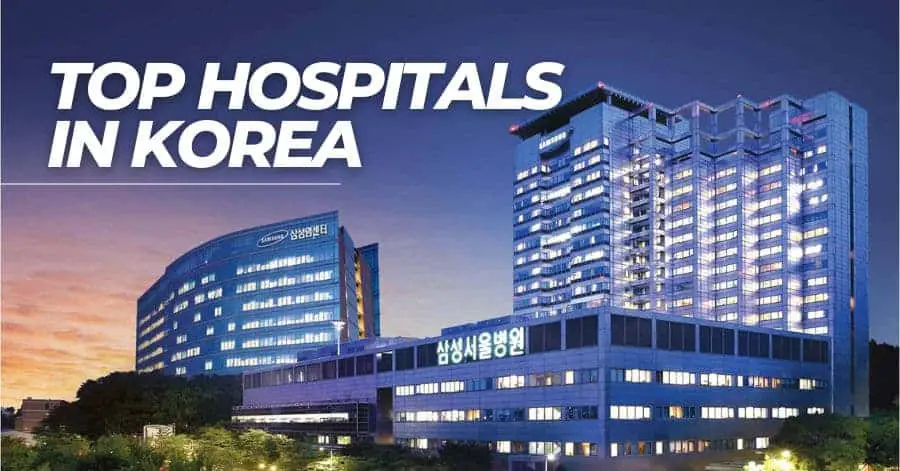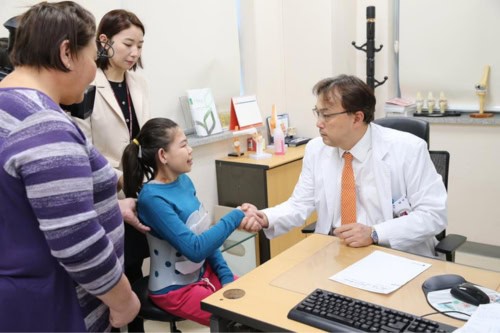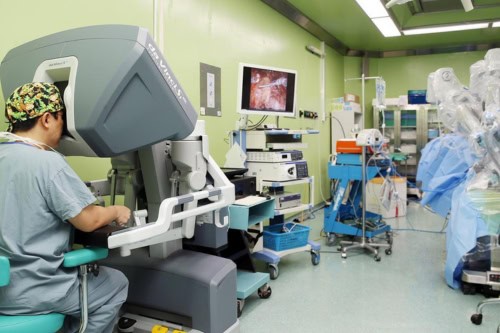Which are the best hospitals in South Korea? South Korean hospitals are known to be some of the most advanced in the world because of the country’s dedication to medical research and development. This article will cover the top 10 hospitals in South Korea geared toward treating overseas patients.
We will focus on the facilities, specialized fields, and services provided for foreign patients in each hospital, emphasizing the top 5 hospitals. This information will be helpful for individuals who are considering receiving medical treatment in South Korea and would like to make an informed decision about where to go.
These hospitals in South Korea have been selected based on the Newsweek article “World’s Best Hospitals 2023,” a comprehensive ranking of hospitals worldwide. Let’s dive in!
Read also:
- Top 13 English Speaking Dermatology Clinics in Seoul
- Medical Tourism Guide To South Korea
- How to find the best Korean plastic Surgery Clinics in Seoul?
- Top 12 English Speaking Dermatology Clinics in Seoul
- 10 English-speaking Hair Salons in Seoul
- Asan Medical Center (Rank #29)
- Samsung Medical Center (Rank #40)
- Seoul National University Hospital (Rank #49)
- Severance Hospital – Yonsei University (Rank #67)
- Seoul St. Mary’s Hospital (Rank #91)
- Seoul National University – Bundang Hospital (Rank #93)
- Ajou University Hospital (Rank #119)
- Gangnam Severance Hospital – Yonsei University (Rank #133)
- Yeouido St. Mary’s Hospital (Rank #142)
- Korea University – Anam Hospital (Rank #144)
Asan Medical Center (Rank #29)
Since it first opened 32 years ago, Asan Medical Centre (AMC) has been one of the most critical health networks in South Korea. It also has become one of the most well-known hospitals and won several awards for its outstanding work.
The Asan Social Welfare Foundation runs eight hospitals, one of which is the Asan Medical Centre. The Foundation works hard to help people in desperate need of medical care. Hence, Asan Center is one of the biggest hospitals in South Korea. It covers an area of 85,000 sq m and has more than 2,700 beds for patients.
The hospital handled over 900,000 inpatients and 3,000,000 outpatients. Asan Medical Centre gives some of the most up-to-date ways to treat patients, such as robotic surgery, custom cancer treatments, molecular imaging techniques, stem cell therapy, and more. In 2013, the Minister of Health and Welfare chose the hospital as a research-based hospital to keep up with changes in medicine.
Asan Medical Centre wants to be a leader in medicine worldwide, so it focuses on study and research. The hospital is always looking for new ways to combine organic substances and try them in clinical trials to develop new drugs. The center is working on modern medicine to not only ease the pain and speed up the healing process but also to get rid of the disease from the start.
This hospital is one of Seoul’s advanced study centers that try to blend engineering and medicine naturally. The Asan Clinic’s Research Centre is quick to put ideas into practice, and some of the biggest pharmaceutical companies in the world have signed contracts with them for clinical trials. The clinic’s work in the study has made it famous worldwide.
Why is Asan Medical Center one of the best hospitals in South Korea?
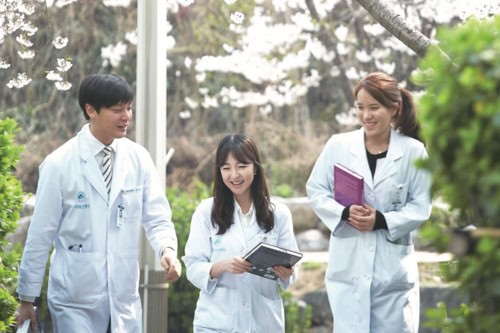
Asan Medical Center is the largest healthcare provider in Korea. It has a long history of providing good care. Because of its outstanding contributions, services, and treatment plans, the hospital has been named the Number one by:
- Korean Management Association Consulting (KMAC)
- Survey of customer satisfaction
- The Korean Organ Sharing Organization as a center for organ transplants
- The World Health Organization for being a center for treating different types of cancer and more.
Asan Medical Center is one of the best places to do research. Each year, researchers from all over the world work together to do research there. The operating and other rooms have the most up-to-date technology for accurate diagnosis and treatment. There are 27 specialized centers and 44 clinical departments to help in all areas of medicine.
Additionally, more than 15,000 people from other countries come to Asan Medical Center for effective procedures like stem cell transplants, kidney transplants, liver transplants, and pancreatic transplants. Top-notch surgeons and specialists at the hospital do more than 66,000 complex surgeries annually.
Medical Specialties
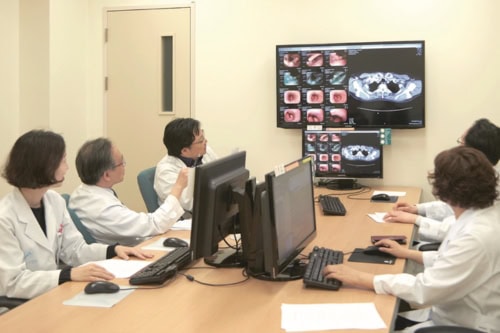
Cancer treatment
The most significant part of the hospital is the Department of Oncology. On its base are centers for treating breast, lung, and prostate cancer and an interdisciplinary center for treating prostate cancer. In the department that cares for people with breast cancer, 70% of tumor removals are done while keeping the organ. Reconstructive surgery is done if the breast can’t be saved.
Chemotherapy, radiation therapy, and surgery are all ways that doctors treat lung cancer. These methods are used together depending on the type and stage of the tumor. The oncology department has set up a sound system for care after surgery. This method makes complications less likely and helps patients get better faster.
Gastroenterology
The Department of Gastroenterology specializes in evaluating and caring for patients with acute and chronic gastrointestinal disorders. Laparoscopic and endoscopic procedures are surgical techniques used to treat the digestive tract, including the stomach, small intestine, and pancreas.
The largest department for treating Crohn’s disease is located in the building where the department is located. A minimally invasive laparoscopy addresses the condition in fifty percent of the instances. After going through it, the patient will feel better in about a week.
Aortic treatment
The Aortic Disease Center at Asan employs cutting-edge medical procedures to treat aortic diseases such as aneurysms, dissection, and stenosis. In this case, minimally invasive surgical procedures were carried out in addition to the more conventional surgical therapies.
In a laboratory specializing in vascular illnesses, non-invasive testing of the cardiovascular system can be performed using several different technologies, which enables accurate and speedy diagnosis of even the most subtle heart dysfunctions.
Plastic surgery
In the plastic surgery center, procedures involving injection cosmetology and laser technology are utilized to perform cosmetic and reconstructive surgical procedures. Surgeons at the Asan Medical Center are experts in performing intricate reconstructive surgeries. They repair abnormalities of the skull, facial bones, and neck that might be congenital or acquired over time.
Patients frequently select Asan Medical Center for procedures such as breast augmentation, rhinoplasty, and abdominoplasty. Certified implants or the patient’s tissue can be used in the hospital to achieve the desired change in the contour of the breasts.
Laser surgery is one of the treatment modalities offered at the Center for Aesthetic Plastics. The Department of aesthetic medicine uses cutting-edge technology, such as CO2-lasers, 3D-lasers, and Starlux installations. They are applied to the skin of the face and body to repair age spots, address vascular abnormalities, and promote overall rejuvenation.
Robotic surgery
Every patient at Seoul Asan Hospital gets care that is both effective and safe. In 2007, the medical center got the state-of-the-art Da Vinci robot, which is used for minimally invasive procedures. Robotic surgery was quickly accepted. Most robotic surgeries have been done at the Asan Hospital in recent years.
In 2016, about nine years after the Da Vinci robot appeared, the company did 8,000 surgeries using this new robot. Asan Medical Center uses three big da Vinci robots right now. These units are used in urology, breast, prostate, and colon cancer treatment, endocrine surgery, liver transplantation, hepatobiliary surgery, hepatobiliary pancreatic surgery, pediatric surgery, otolaryngology, obstetrics, and gynecology.
Facilities
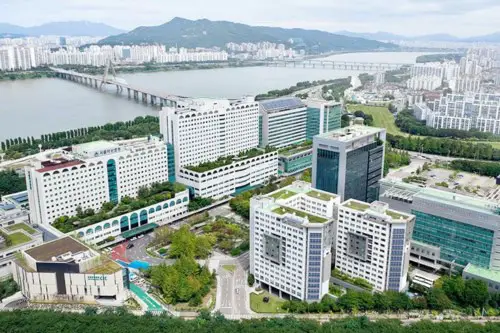
Asan Medical Center is famous for being one of the best hospitals in South Korea because of how well it cares for its patients. With 2,700 beds and more than 11,000 employees, including 2,600 doctors and 5,000 nurses, the hospital has one of Korea’s largest and most complete medical centers. It is a whole complex that includes hospital buildings, shops, restaurants, a concert hall, and a grocery store. Patients stay in comfortable single or double rooms and are constantly watched by medical staff.
It has state-of-the-art facilities, such as a center for robotic surgery, a center for cancer, and a center for heart health. The hospital also has MRI and CT scanners, a blood bank, and a pharmacy. Some of the hospital’s specialties are cancer treatment, surgery on the heart and blood vessels, and organ transplants.
The hospital has a team of skilled experts who use current medical techniques and procedures. The hospital also has specialty centers for women’s health, children’s health, and sports medicine. This ensures that patients get the best care possible in every area of medicine.
It also has a special place for foreign patients called the International Healthcare Center. The center offers help with insurance and payment issues, as well as translation services and help with making travel plans. The hospital is in Seoul, where public transport makes it easy to get there. While getting medical care, foreign patients can take advantage of the hospital’s closeness to other significant sites in the city.
Services For International Patients
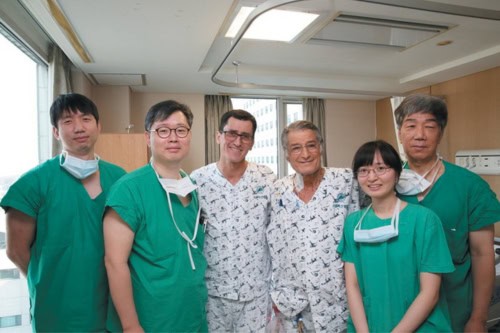
The AMC International Healthcare Center (IHC) provides primary care to foreign patients in Korea and worldwide. It also offers services like referrals to specialty departments, emergency care, prescriptions, immunizations and vaccinations, and medical check-ups for visa applications and students who want to study abroad.
IHC also offers foreign patients a one-stop-shop for all their healthcare needs, such as making appointments for treatment and exams, billing, admission and discharge, medical reports and CDs, etc.
When a patient from another country needs to make an appointment, they should fill out as much information as possible, like their symptoms, diagnosis, medical history, medications, preferred treatment, etc. Suppose patients send in test results and images from other hospitals in South Korea within three months. In that case, IHC can answer your questions much faster. IHC commits to giving services to foreign patients quicker and better in four steps.
Asan Medical Center offers a wide range of services for patients to have a peaceful and comfortable stay. From when you sign up to when you leave, the staff is there to answer any questions you have as soon as possible.
Language help is available in more than six languages, including Chinese, English, Mongolian, Russian, Japanese, and Arabic, for patients from other countries. Patients get one-on-one help so that any questions can be answered quickly. Besides that, the territory has a place to use the Internet, a waiting area, bathrooms, and comfortable rooms.
- Contact: 82-2-3010-5001
- Website: https://eng.amc.seoul.kr/gb/lang/index.do
- Address: 88, Olympic-ro 43-gil, Songpa-gu, Seoul, South Korea (Zip code: 05505)
- Working Hours: from 8:30 am to 5:30 pm, Monday through Friday
Samsung Medical Center (Rank #40)
Samsung Medical Center is one of the best hospitals in South Korea, with the most advanced technology globally. When it opened in 1994, this hospital was the first place to use a new idea called “patient-oriented.” With a slogan like “Care Together, Happy Together,” this medical center is committed to each patient’s happiness and well-being.
Since it has been open for 20 years, everyone knows about the Samsung medical center. For 14 times, it came in first place on the National Customer Satisfaction Index (NCSI), 16 times on the Korean Customer Satisfaction Index (KCSI), 12 times in a row on the Quality of Service Index (KS-SQI), and 12 times it was chosen as Korea’s leading medical brand.
As the complete medical center in the country, SMC offers the latest diagnostic and treatment methods through its Samsung Comprehensive Cancer Center, Proton Therapy Center, and Heart Vascular and Stroke Institute. These centers are at the forefront of cancer treatment and heart and vascular diseases.
With advanced medical infrastructures like Proton Therapy, Gamma Knife Surgery, Robotic Surgery, Tomotherapy, MR-HIFU, Emergency Medical Helicopter, Smart ER, Hospital Information System (HIS), Clinical Pathology Automation System, and Logistics Automation System, SMC is at the forefront of the new digital and personalized hospital culture in Korea.
Today, the Samsung Medical Center is more than just a clinic. It is also a hub for the future of medicine and a center for research worldwide. The Samsung Hospital has technologies and equipment that are more advanced than what is considered new in the best medical institutions in the world.
Why is Samsung Medical Center one of the best hospitals in South Korea?
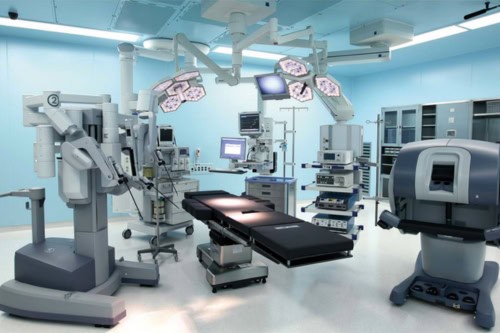
Samsung Medical Center is the world leader in oncology, translatology, neurosurgery, and cardiothoracic surgery. Also, the hospital has the highest survival rates in the world for babies born early (over 50% for babies born very early). The Hospital Samsung’s Department of Pediatrics and Infant Care saved a baby born early and weighed only 380 grams.
Samsung Medical Center doesn’t just care for a patient’s physical health; they also help them feel good about themselves. The government has provided several services and made wise investments in infrastructure building. There are about 2300 sickbeds, and 90% of people get better.
With the intention of “contributing to the improvement of the nation’s health through the most advanced medical research and technology, the best medical care, and the development of outstanding medical personnel.” In the first place, the Samsung Medical Center has done an excellent job of combining and establishing unique medical ideas. The hospital puts the patient first and is highly satisfied with its medical services.
Medical Specialties
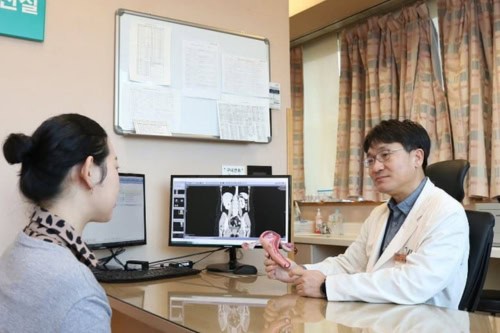
Top-notch technology is a big reason why so many people go to hospitals in South Korea for treatment and why diagnosis and treatment are so often successful.
Cancer treatment
The Samsung Medical Center has the biggest oncology hospital in Asia. It is also the first hospital in Korea to treat all types of cancer with complete medical care (from prevention and examination to treatment and rehabilitation, education, and research).
The Agency for Monitoring and Evaluation of Health Insurance gave the Center for Colorectal Cancer in the Oncology Hospital of Samsung the number one rating for treatment effectiveness.
Also, the Oncology Hospital is the best at treating hematological diseases and transplanting bone marrow. The hospital has developed a new assessment scale to predict patient health changes with extranodal NK/T-cell lymphoma. The medical center is set up so that there are centers for each of the most common kinds of cancer.
Organ transplantation
At the Samsung clinic, transplants of the lungs, heart, kidney, liver, small intestine, heart valves, bones, skin, cornea, and other body parts are done. Organs from both living and dead people can be transplanted.
Samsung has one of the highest liver transplant success rates in the world. Transplants of bloodless liver tissue, homogenous pancreatic tissue, and intestine and liver tissue to a 3-month-old newborn were all performed here for the first time in Korea. After a liver transplant, 95% of patients will survive for at least five years.
Cardiovascular surgery
Agency for Monitoring and Evaluation of Health Insurance says that Samsung Medical Center is the best at coronary artery bypass grafting in terms of how well it works.
This hospital has made a lot of discoveries and improvements that have helped treat heart diseases. For example, Samsung researchers found for the first time in the world that chest pain in people with severe stenosis of the aortic valve is caused by hypertrophy of the left ventricle, which makes the capillaries work less well.
Neurosurgery
Regarding success rates, experience, and technologies used, the Neurosurgery Department at Samsung Hospital is the best in Korea and the best in the world. SMC uses the following cutting-edge technologies to make sure that operations are exact and that complications are kept to a minimum:
- Devices for the high-precision investigation of brain waves
- Intra-operative monitoring
- Equipment for localized operations (Stereoracric frame: CRW, Leksell)
- Neuro endoscopy
- Functional MRI and PET
This medical center was the first in Asia and the sixth in the world to use a new version of the Gamma Knife (Icon). Currently, the hospital has the latest and the old version of the Gamma Knife, which is called Perfexion. Samsung is one of only four places worldwide where two Gamma Knife machines can be used immediately.
Facilities
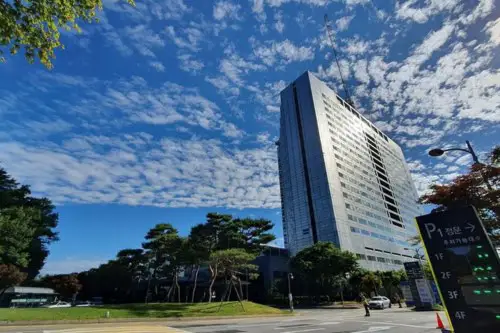
The main building, the extension, and the Oncology hospital are all parts of the Samsung Medical Center. Also, the Proton Center opened in 2014, and the “Ilvon” building and the Outpatient Treatment Center were built to assist patients better.
The medical center’s main building is 200 thousand square meters, with 20 floors above and five feet below ground. There are 40 departments, ten specialty centers, 120 specialty clinics, and 1,306 beds in the clinic. The Samsung Oncology Center is a 19-story building with more than 100,000 m2 of space. It has 11 floors above ground and eight below. In the cancer center, there are 655 beds.
The hospital has many facilities to ensure that local and international patients stay comfortably. There is a hair salon, a shop, an electronics shop, and a prayer room in the well-equipped rooms. Just one year after it opened, the hospital opened an international medical center for people from other countries.
The center offers inpatient and outpatient care, counseling, and referrals to specialists in the many fields of the hospital. The center also has specialized clinics for treating a wide range of illnesses only available to international patients. Adults and children get regular health care and individual wellness checks and visits in case of an emergency.
Services For International Patients
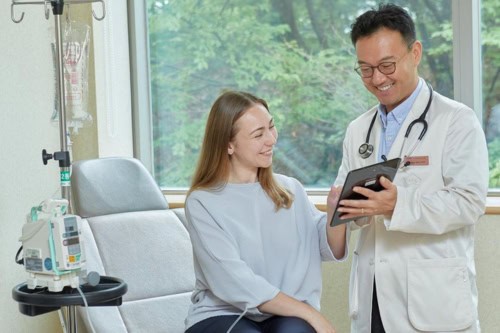
The International Healthcare Center (IHC) at Samsung Medical Center allows international patients to get inpatient and outpatient care, consultations, and referrals in various specialties. Their center does everything possible to make our patients feel comfortable during treatment. This includes setting up translation services in English, Russian, Arabic, Chinese, Mongolian, and other concierge services like transportation and lodging.
Patients from other nations are prioritized at the Centre for International Patients, which strives to make their experience as stress-free as possible. It accomplishes so by providing translation services between English and Chinese, Russian, Arabic, and Mongolian, as well as by helping patients get to and from their appointments and locating temporary housing in Korea.
- Contact: 82-2-3410-0200
- Website: https://www.samsunghospital.com/gb/language/english/main/index.do
- Address: (06351) 81 Irwon-Ro Gangnam-gu, Seoul, Korea
- Working Hours: Weekdays: 08:00 ~ 17:00 & Saturday: 08:00 ~ 12:00
Seoul National University Hospital (Rank #49)
The Seoul National University Hospital (SNUH) is one of South Korea’s oldest and most well-known medical health networks. Every year, people from more than 80 different countries come there for treatment.
The hospital’s goal is to give patients the best care possible. They focus on all areas of medicine and keep a calm environment for all visitors. In 130 years, the network has grown a lot. Now it has three hospitals in South Korea and 1 in the United Arab Emirates. Over 300,000 people attend the center annually, which can hold up to 1,760 people.
This institution has been ranked as one of the best multi-specialty hospitals in South Korea for the twentieth year, earning this distinction again. In addition, ISQUA has recognized this establishment as the country’s first hospital to be granted accreditation. This distinction has been bestowed upon it. This hospital offers a wide range of medical services, making it an excellent choice for anyone needing medical attention. It is unequaled in the disciplines of cancer surgery, pediatric oncology surgery, mammalogy surgery, translational medicine surgery, neurological surgery, and cardiovascular surgery.
Why is Seoul National University Hospital one of the best hospitals in South Korea?
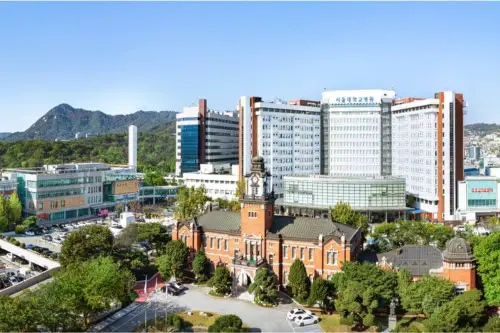
Seoul Hospital Korea is South Korea’s most important medical network. It has been helping people from all over the world for more than 130 years. The hospital wants to be one of the most trusted places for health care by giving patients the best services and care plans. The staff and doctors at the hospital are among the most experienced and well-trained.
Total employees number 8960, including 1900 medical professionals. They use state-of-the-art equipment for every diagnostic and therapeutic procedure, including MRI, PET-CT, dual-energy CT, IMRT, and brachytherapy. In the event of an emergency, the hospital’s top-notch personnel is on call around-the-clock, every day of the week. It also works with several insurance providers to provide cashless billing services. The hospital also provides health exams, assistance with visa applications, and home care.
There is also a part of Seoul University Hospital that tests and improves medical equipment. So, each part of the hospital has the most up-to-date medical equipment, like ultrasound, MRI, CT, PET-CT machines, and unique systems for studying brain activity and other things. For example, the hospital uses magnetoencephalography (MEG). This new method can easily find even the most minor brain problems.
For example, it can find the source of neural activity to diagnose epilepsy. The hospital also has several Check-Up programs for its patients. Patients can have their bodies checked as quickly as possible for signs of cancer, heart disease, diabetes, and many other diseases.
Medical Specialties
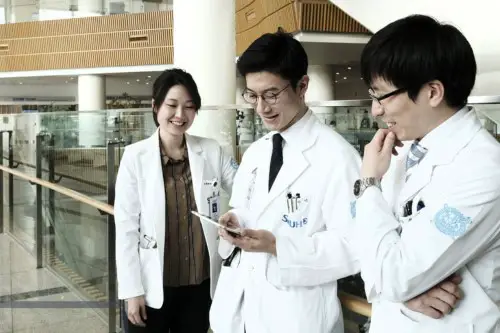
Children’s Hospital
The largest children’s hospital in South Korea is Seoul National University Hospital. In 11 areas and 16 departments, it diagnoses and treats diseases in children. SNUH Children’s Hospital rooms are set up so every child feels at home. There are toys, funny pictures on the walls, and brightly colored furniture. The hospital also has up-to-date diagnostic and treatment equipment, making it possible for procedures to be done safely.
Center
At SNUH Oncology Center, more than 700 neurosurgical and 600 radiological operations are done on brain tumors of different types and sizes each year. Over 1,200 breast tumors and up to 1,000 stomach cancer operations are also done yearly. Since 1988, there have been more than 1,000 liver transplants. The hospital has one of the best success rates in the world for treating cancer. When doctors remove tumors, they do everything possible to save the organ. For example, neuromonitoring can almost always keep a patient’s voice when they have a thyroid tumor.
Oncohematology
At SNUH, considered one of the largest hospitals in South Korea, there is a department dedicated to treating benign and malignant blood diseases. Leukemia, multiple myeloma, lymphoma, anemia, and hemophilia are all diseases that specialists can successfully treat. Additionally, bone marrow transplantation has been performed more than 1,800 times since 1985.
Neurosurgery
One of the most essential things at SNUH is neurosurgery. Every year, 3,800 brain and spinal cord surgeries are done here. The hospital also offers radiosurgery treatments with the newest Gamma Knife (about 700 procedures per year). The device’s navigation system has been improved to remove tumors with even more accuracy and less damage to healthy tissue. After the procedure, there is a 3-7% chance of problems, but the treatment works 90% of the time. Since Gamma Knife doesn’t require any cuts on the outside of the body, patients can go home after two days.
Transplantology
Kidney, liver, pancreas, heart, lung, and cornea transplants are among the most in-demand surgeries at SNUH. In 1969, doctors successfully transplanted a kidney for the first time. The first liver transplant was then completed in 1988. Four hundred of these operations have been performed every year since. However, the transplant success rate is crucial. The five-year survival percentage for patients who undergo liver transplantation is at least 82%, and the success rate for such surgery is 99%. There is a higher 5-year survival percentage (92%) for recipients of living kidney transplants compared to those in the United States.
Facilities
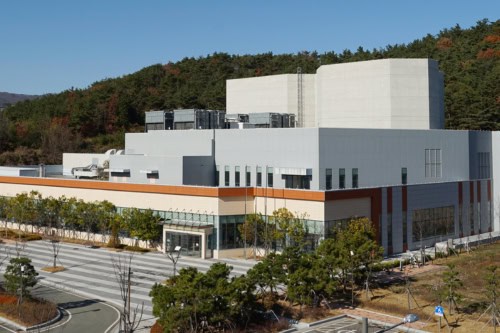
The Seoul National University Hospital is one of South Korea’s oldest places to get medical care. It has been named the best multidisciplinary medical center in the country 19 times, and ISQUA has given it an international seal of approval. Ministers and the President of South Korea use the services of the hospital’s specialists.
With more than 1,700 beds, SNUH can care for more than 8,900 outpatients and about 1,750 inpatients daily. With new IT (information technology) systems in place in 2004, SNUH has also turned the building into a digital hospital. SNUH has a leading hospital, a children’s hospital, a hospital for people with cancer, and a biomedical research center.
The Department of orthopedic surgery at SNUBH runs several specialized clinics based on an in-depth study of diseases that affect bones, joints, nerves, and muscles. These clinics offer treatments that are tailored to each patient’s unique needs. The research and treatments for cerebral palsy/pediatric orthopedics, hip joint diseases, intractable cervical spinal diseases, knee joint and sports medicine, shoulder joint, bone, and soft tissue tumors, hand diseases/microsurgery, and fine reconstructing field of the hands by the specialized medical staff are known for their high academic value in and out of the country.
Services For International Patients
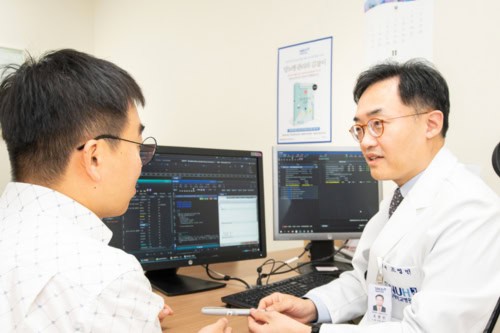
SNUH is a world-famous hospital that annually sees 30,000 patients from 80 countries. The Department for Foreigners is open 24 hours a day. It always has services, like an interpreter, a guide, a ride, help finding a place to stay, etc. A number of big insurance companies also work with the clinic.
The people in charge of the hospital ensure that all patients and visitors are fine while there. There are cafes, restaurants, stores, retail shops, banks, a post office, and a hair salon; comfortable single rooms, double rooms, triple rooms, and general wards for the patients. Patients can choose from Korean, European, and other types of food.
- Contact: +82-2-2072-0505
- Website: http://www.snuh.org/global/en/main.do
- Address: 101, Daehak-ro Jongno-gu, Seoul, Rep. of Korea
- Working Hours: from Monday to Friday, 9:00 am ~ 5:30 pm
Severance Hospital – Yonsei University (Rank #67)
In South Korea, Severance Hospital-Yonsei University is the leader in the medical field. The close ties between these institutions and their specialized medical services make them a good choice.
The following are parts of the Yonsei University Health System: Severance Hospital in Sinchon, Seoul, has five specialized hospitals in South Korea, the International Health Care Center, and the Severance Robot and MIS Center. Gangnam Severance Hospital in the Gangnam area of Seoul has three specialized hospitals. Yongin Severance Hospital is in a satellite city near Seoul (Yongin).
Severance Hospital was the first in Korea to try to improve the quality of medical care by specializing in it. It runs specialized hospitals in South Korea like the Rehabilitation Hospital, Cardiovascular Hospital, EYE Hospital, Children’s Hospital, Emergency Care Center, International Health Care Center, and Cancer Clinic. Severance Hospital also works in many ways to improve the quality of medical care. For example, in 1993, it supported the “Patient’s Bill of Rights” and got Joint Commission International (JCI) Accreditation.
This medical center shows love for God, which the hospital was built on, and passion for people. The hospital works hard to stay competitive internationally by putting a lot of effort into developing advanced medical care, keeping up with the latest medical technology through constant education and research, and ensuring patients are happy with advanced medical services.
Why is Severance Hospital – Yonsei University one of the best hospitals in South Korea?
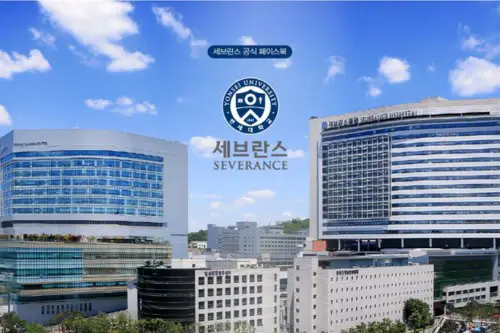
A leader:
Severance Hospital was the first place in Korea to offer medical care. This medical center has been the main hospital in the area for 133 years. It has been the best choice for international patients for the past eight years.
Every year, the best new graduates from the well-known Yonsei Medical University join this top hospital. Medical research done with the help of the university is a big part of why the care in this hospital is so good.
A separate oncology center was built at Severance Hospital 7 years ago. There is also an emergency center, an international health center, a cardiovascular hospital, an ENT hospital, and a hospital for children. The complex has over 3,500 beds and helps more than 4 million people yearly, both outpatients and inpatients.
A pioneer:
- The first Western-style building in Korea was built more than 130 years ago. A year later, the University of Yonsei, the first medical school in Korea, was built as a scientific and educational base for the clinic.
- In 1998, the hospital developed a new way to treat liver cancer by making a drug called Holmium-166.
- Robotic surgery has been available in Severance for the past 12 years. The Da Vinci Robot was used for the first time in Korea, much earlier than in other top clinics worldwide.
- The hospital has been accredited internationally for the last ten years.
Specialties
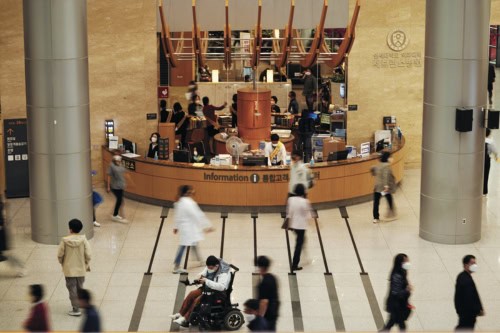
Regarding patient care, the Gangnam Severance Hospital uses a “multidisciplinary treatment system.” Different clinical departments work together to develop each patient’s most effective individualized treatment plan. Because it has access to such innovative surgical equipment, the hospital is at the forefront of research into cancer cures.
- Leukemia, brain tumors, lymphoma, sarcoma, and other forms of cancer are all treated by the Department of Oncology.
- Aplastic anemia, hemophilia, idiopathic thrombocytopenic purpura, and other blood disorders are treated at the Department of Hematology.
- Children’s onomatology: Patients and their families from all over the Commonwealth of Independent States (CIS), the Gulf Cooperation Council (GCC), the Middle East, and East Asia travel here to receive treatment for rare forms of cancer.
- Ophthalmological Center treats various eye diseases and conditions, including cataracts, glaucoma, uveitis, corneal ulcers, retinal angiopathy in hypertension, and astigmatism.
- The Cancer Center spans 15 floors and is equipped with the most cutting-edge technology and oncology experts.
- Some treatment options include Tomotherapy, radiation therapy, chemotherapy, laparoscopic surgery, and operations performed with the Da Vinci robot.
1-day medical check-up programs are available at the health check-up center.
In addition, as part of an all-encompassing strategy for treating cancer, the hospital provides medical care and programs for recovery and cancer prevention. These include classes on cooking for cancer patients, a “rest of mind” program for patients and their families, cooking classes for cancer patients, and public health seminars.
Facilities
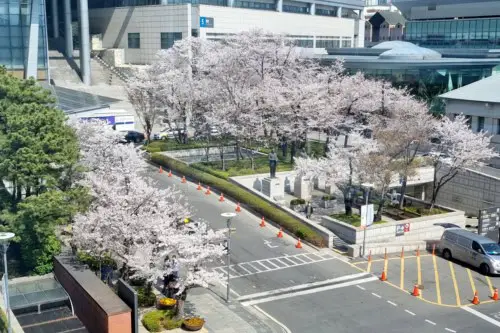
Every day, the Severance Hospital treats forty thousand different patients. Because many of Korea’s most influential politicians and government figures are patients at the clinic, Severance is sometimes called the “Hospital of Presidents.” This moniker came about as a result of the facility’s patient population.
During his lifetime, the late President Kim Dae-Jung would only go to this hospital for medical care. In addition, many foreign officials, such as Henry Kissinger, a former secretary of state of the United States, have received medical care at the facility.
The Joint Commission International granted accreditation to Severance Hospital in 2007, making it the first hospital in all of Korea to receive this prestigious certification, which is the goal of many of the best medical facilities in the world. This accreditation once again confirmed the compliance with the world standards regarding medical equipment, treatment methods, doctors’ professionalism and the process of a patient’s stay in the hospital, and the service it provides.
The hospital has state-of-the-art medical care for various clinical specialties. It has 67 clinical departments, 16 cancer clinics, 27 specialty centers, 5 Specialized Hospitals, and Dental hospitals. About 7,000 people work for the Health System, including nearly 2,000 doctors and 5,000 support staff. It has over 3,700 beds and receives about 3 million outpatients and 1 million inpatients yearly. All in all, the size of the whole lot is 77 acres, and the size of the house is 640,538 ft2.
Services For International Patients
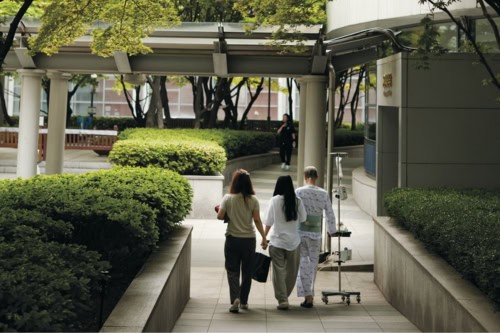
As a preeminent healthcare facility in South Korea, Severance Hospital has demonstrated remarkable efficacy in treating various illnesses. Because of this, millions of patients go to this particular hospital.
The hospital is frequented by people from the surrounding community and people from other countries. Most are citizens or residents of the U.S., Canada, Japan, China, Mongolia, or Russia.
There is a streamlined processing system in place for non-citizens. Because of this, the patient can get the necessary examination as quickly as scheduled and is referred to a treatment facility. In addition, the hospital offers the following services to patients from other countries: transportation to and from the airport; lodging in comfortable rooms; individualized meals (Western, Slavic, and halal options); translation services; and follow-up care after the patient has returned home.
- Contact: 82-2-2228-5800 / 5810 (International Health Care Center) or 82-2-2228-1009 (Appointment Center)
- Website: https://sev.severance.healthcare/sev-en/index.do
- Address: 50-1, Yonsei-Ro, Seodaemun-gu, Seoul 03722, South Korea
- Working Hours: Mon.-Fri. 9:00am ~ 5:30pm
Seoul St. Mary’s Hospital (Rank #91)
“A hospital that gives new hope through personalized medicine” is the slogan of Seoul St. Mary’s Hospital. This shows the spirit and will of their hospital to become a “hospital of hope” that gives the joy of healing and the light of life by using cutting-edge medical techniques in advance to meet the unique needs of each patient and by challenging the treatment of severe diseases like cancer, heart disease, and brain disease and the conquest of rare, incurable diseases.
Also, the first kidney transplant, corneal transplant, allogeneic hematopoietic stem cell transplant, and small intestine transplant were all done successfully for the first time in Korea at Seoul St. Mary’s Hospital.
This was a big step forward for Korean medical technology. In the past few years, they have gone through both domestic and international evaluations and certifications, such as JCI and AAHRPP, which have made them not only a safe and ethical hospital that is better than the rest of the world, but they have also gotten the highest scores for evaluating medical quality and customer satisfaction.
Why The Catholic University Of Korea – Seoul St. Mary’s Hospital is one of the best hospitals in South Korea?
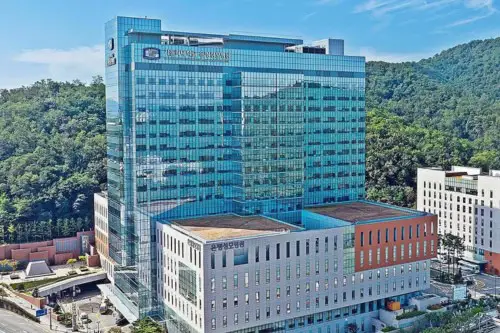
Based on its 70 years of history, Seoul St. Mary’s Hospital (SSMH) is the main hospital of the Catholic Medical Center, which has the most extensive medical network in Korea, with eight subsidiary hospitals in South Korea and seven research centers. At SSMH, 25 special care centers, such as the Catholic Comprehensive Cancer Institute, Organ Transplantation Center, and Eye Center, offer patient-centered, one-stop medical care.
Seoul St. Mary’s Hospital is the most prominent building in Korea (it has 22 upper floors and six underground floors). It has 1,332 beds, 48 clinical departments, 800 medical doctors, and 1,800 nurses. SSMH helps 6,719 outpatients daily, and about 1,166 inpatients get reliable, high-quality medical care. It also does an average of 128 surgeries every day. Blood marrow transplants are already a well-known service at Seoul St. Mary’s Hospital. The SSMH is ranked fifth in the world for BMT (Blood and Marrow Transplant) and is the best school in both quality in Asia. The G2G contracts between South Korea and Abu-Dhabi Health Authority, Kazakhstan Health Authority, and First Central Hospital of Mongolia bring a lot of BMT patients from other countries to SSMH.
SSMH was the first hospital in the country to earn ISO 9001 certification in 2005. Joint Commission International and the Association for the Accreditation of Human Research Protection Program gave SSMH perfect scores in June and July of 2010, demonstrating the hospital’s dedication to patient safety. JCI reaccredited the hospital in July 2013. No mistakes were found in any of the 1298 locations inspected.
Medical Specialties
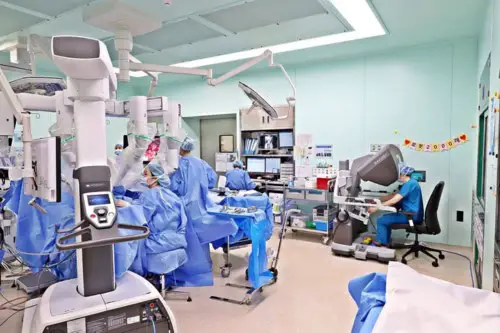
Genetic Eye Diseases
Seoul St. Mary’s Hospital has an Independent Eye Center with specialized clinics like the External Eye Disease Clinic, the Cataract and Refractive Surgery Clinic, the Retina Clinic, the Glaucoma Oculoplastic Clinic, and the Squint/Pediatric Ophthalmology/Neuro-Ophthalmology Clinic. It is known as the best and most popular eye treatment center because it is an expert in its field.
Treatment of mediastinal tumors
Some thoracic surgeons know how to treat tumors in the mediastinum at Seoul St. Mary’s Hospital. Depending on where the cancer is, what kind it is, and the patient’s overall health, they offer surgery, radiation therapy, chemotherapy, or a combination of these services. For surgery, they use modern, less invasive techniques that help the patient heal faster and leave fewer scars.
Pectus Excavatum Surgery
Surgery for pectus excavatum works every time at Seoul St. Mary’s Hospital. The most recent statistics, the highest in the world, show that 450 cases are dealt with each year, and 4,000 surgeries are done. This hospital’s primary focus is on new research and evidence-based practice. They have done a new NUSS procedure that is being tested in the real world and is ready to be shown to the public.
Submucosal Myoma Treatment
Seoul St. Mary’s Hospital uses minimally invasive surgeries, like hysteroscopic myomectomy, as a standard way to treat myomas with surgery. World-class and safe robotic-assisted laparoscopic myomectomies are available for women who want to maintain fertility. Their treatments are safe, effective, and reliable, so they help people heal faster, get better more quickly, and feel less pain.
This hospital is the largest medical network in Seoul, South Korea. It is a university teaching hospital. Seoul St. Mary’s Hospital’s uniqueness is shown by its 39 clinical departments, 24 specialized centers, and eight affiliated hospitals in South Korea. The specialists’ goal at Seoul St. Mary’s Hospital is to “give hope through high-quality medical care.”
Facilities
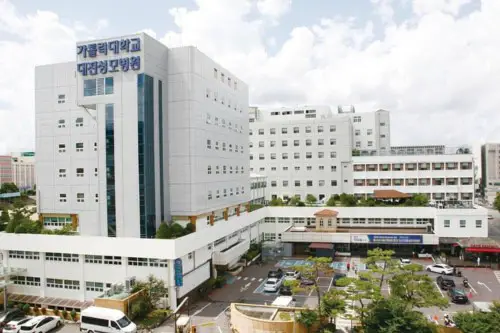
Seoul St. Mary’s Hospital is affiliated with the Catholic University of Korea. It is equipped with cutting-edge medical technology and employs highly qualified medical professionals. They are the largest hospital in Korea, 22 levels above ground, with 1,374 beds.
They did the first kidney transplant, cornea transplant, allogeneic hematopoietic stem cell transplant, and small bowel transplant in Korea. This helped the country’s medical technology get better. They have earned accreditation from the JCI, the AAHRPP, and other national and international organizations, which shows that their clinical practice is safe and ethical.
Seoul St. Mary’s Hospital also offers specialized medical services with unmatched expertise. They use cutting-edge medical systems in an eco-friendly setting, always putting the patient’s needs first out of a deep respect for life.
Services For International Patients
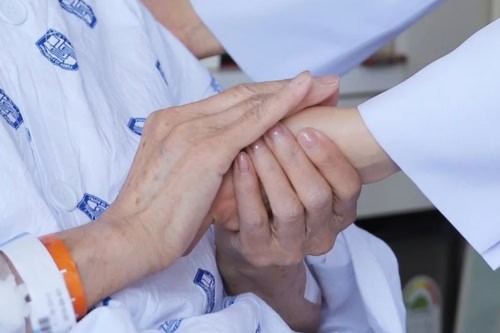
The International Health Care Center wants to give international patients the best medical care possible. Its staff comprises highly trained doctors who have worked in foreign medical services. They are committed to providing international patients living or traveling in Korea without Korean National Insurances high-tech and caring medical care.
Doctors, nurses, and coordinators who work at the International Health Care Center are fluent in English, Russian, Arabic, Japanese, French, Chinese, and Korean, among other languages. The staff is ready to help foreigners or people from different countries with their medical needs. They give them all the necessary health information.
When it is determined that a patient needs to see a specialist at a specialized department or center, the patient will be transferred there with the assistance of an interpreter and the continuous support of the professionals at the International Health Care Center.
Emergency care in the St. Mary’s Hospital in Seoul is open 24 hours a day, seven days a week, for foreign patients who need immediate medical care. The Emergency Center is on the first floor of the main building, and a doctor who speaks English well is there 24 hours a day, 365 days a year, to help people in need.
- Contact: 02-2258-5745 (82-2-2258-5745 from overseas)
- Website: https://www.cmcseoul.or.kr/en.common.main.main.sp
- Address: 222 Banpo-Daero, Seocho-Gu, Seoul, South Korea
- Working Hours: 8:30 am ~ 5 pm MON ~ FRI (International Health Care Center Hours)
Seoul National University – Bundang Hospital (Rank #93)
At Seoul National University Bundang Hospital, the medical forces have inherited the traditions and responsibilities of Seoul National University Medical School. It has been the center of Korean health care for the past 100 years.
The goal of Seoul National University Bundang Hospital (SNUBH) has always been to give the people they serve the best medical care possible. Over the years, they’ve put all of their efforts into improving the quality of care for patients, doing cutting-edge research, and training the next generation of healthcare workers.
In the late 19th century, Seoul National University – Bundang Hospital was the first hospital in Korea to offer modernized Western medicine. As the symbol of Korean health care and the first teaching institution outside of the Yeongeon-dong Campus, also known as the ivory tower, this hospital carries on the tradition of excellence and its moral obligation as the best hospital in Korea. This is done so the hospital can serve this country’s growing number of patients.
For thirteen years in a row, the Korea Brand Power Index has put SNUBH at the top of the list for measuring the quality of general hospitals in South Korea. In 2012, the Health Insurance Review and Assessment Service, part of the National Insurance Company of Korea, gave SNUBH the title “1st Class in all categories” for quality measurements based on outcomes, patient safety, and customer satisfaction.
Why is Seoul National University – Bundang Hospital one of the best hospitals in South Korea?
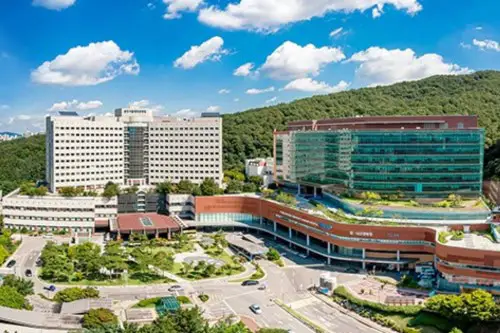
World-Class Care For Patients
Their medical center has 1,360 beds and is in the southern suburbs of Seoul. It offers cutting-edge diagnostic and treatment care in almost every area of medicine and surgery, including subspecialties.
Their nine multidisciplinary care centers, which SNUBH doctors staff from many fields of medicine, offer patients with a wide range of medical conditions and need a single place to meet all their medical care needs.
A Research Powerhouse
As the primary teaching hospital of the Seoul National University Medical School, SNUBH has been a leader in both cutting-edge medical research and cutting-edge clinical practices for a long time.
SNUBH has one of the most active hospital-based research programs in Korea. These programs involve more than 30 clinical departments and specialties of the hospital and cost more than $25.4 million US dollars each year.
Instruction And Education
SNUBH is one of the three leading teaching hospitals in South Korea for the College of Medicine at Seoul National University. Nearly all doctors on their staff are also on the teaching faculty. Since the hospital opened, SNUBH has worked to train and mentor the next generation of national and international leaders in medicine and science. It gives doctors, nurses, and other health professionals many opportunities.
This is where medical students, residents, and nurses from all over the country want to learn the most. In turn, these talented professionals will be the future leaders of health care in the U.S. and worldwide. They will also be an excellent resource for all major teaching hospitals in South Korea.
Quality & Safety
SNUBH was the first hospital in Korea to be fully digitalized and paperless. This was made possible by the new EMR (Electronic Medical Record) System, which their subsidiary medical information technology company created.
The CPOE (computer physician order entry) system was used for the first time in this country. This was a “leapfrog” event that helped improve the quality of patient care and cut down on medical mistakes in hospitals in South Korea.
Health Screening & Promotion Center
Seoul National University Bundang Hospital has made much progress in patient care and research, especially in cardiac, vascular, and cerebrovascular diseases, cancers, lung diseases, and bone and joint diseases.
In particular, the Health Screening & Promotion Center at Seoul National University Bundang Hospital promotes an optimized program to improve each patient’s health by preventing diseases and catching them early. This is done through an accurate, evidence-based assessment process tailored to each person’s needs.
Medical Specialities
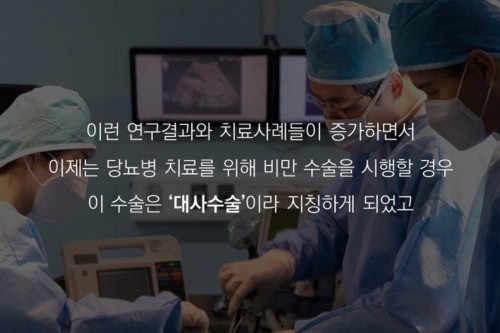
SNUBH is known for complex spine surgery, orthopedic surgery on children, single-port laparoscopy for bariatric surgery, and other gastric cancer surgeries. Complex surgery on the aortic valve and thoracic aortic, Pancreatic and biliary cancer surgery, complex gynecologic cancer surgery, complex cardiovascular intervention, and stenting for heart and brain. Also, robotic surgery (heart, kidney, prostate), lung cancer surgery, and preventive healthcare check-ups.
SNUBH has been a leader in medical research for a long time. It is the primary teaching hospital for the Seoul National University Medical School. SNUBH has one of the most active research programs based in a hospital in Korea. Research funding from the public and private sectors helps the hospital make discoveries and breakthroughs in basic and clinical research, which lead to better ways to treat their patients.
The Department of orthopedic surgery at SNUBH runs several specialized clinics based on in-depth research of diseases that affect bones, joints, nerves, and muscles. These clinics offer treatments that are tailored to each patient’s unique needs. The research and treatments for cerebral palsy/pediatric orthopedics, hip joint diseases, intractable cervical spinal diseases, knee joint and sports medicine, shoulder joint, bone, and soft tissue tumors, hand diseases/microsurgery, and fine reconstructing field of the hands by the specialized medical staff are known for their high academic value in and out of the country.
Facilities
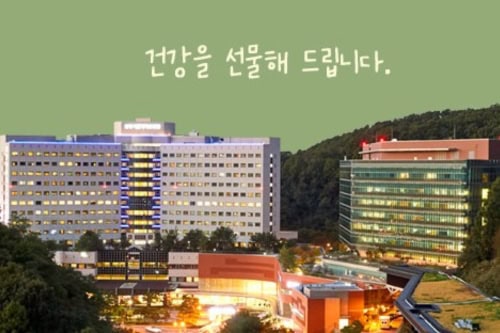
The Seoul National University Bundang Hospital (SNUBH) opened in 2003 and is Korea’s first fully digitalized tertiary hospital. It is known as a leader in minimally invasive surgery. SNUBH follows in the footsteps of Seoul National University Hospital’s fine traditions and art of medicine, combining world-class medical care with the latest electronic medical technology tools. The 1,340-bed hospital has the most up-to-date medical equipment and places for research and teaching.
Infrastructure:
- The hospital is over 120,000 m2 of land, big enough for more than 1,350 inpatient beds.
- About 750 doctors and 1850 nurses work at the hospital, with more than 30 clinical departments. This makes handling more than 32,000 surgeries and about 360,000 inpatients possible annually.
- SNUBH is a research powerhouse; each year, it spends more than $25 million on research.
- About 3000 medical interns, residents, and clinical fellows live at SNUBH.
Services For International Patients
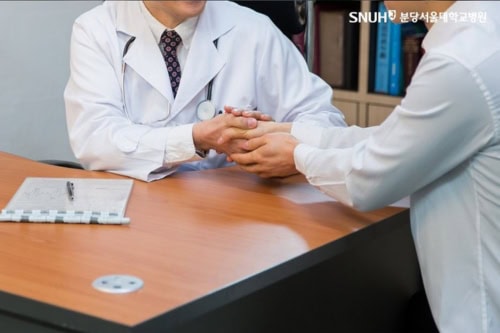
The International Health Center is staffed by medical professionals, nurses, coordinators, and administrative staff who are native speakers of Korean, English, Russian, and Arabic, respectively.
Their staff is well-equipped to meet the social and cultural requirements of patients from other countries and their medical conditions. SNUBH offers comprehensive medical services for outpatient and inpatient patients, covering all medical subspecialties.
- Contact: +82-31-787-2034 (International Healthcare Center)
- Website: SNU Bundang Hospital
- Address: 82, Gumi-ro 173beon-gil, Bundang-gu, Seongnam-si, Gyeonggi-do 13620, South Korea
- Working Hours: Monday through Friday 9:00 am ~ 4:00 pm / Appointment request: Monday through Friday 8:30 am ~ 5:30 pm.
Ajou University Hospital (Rank #119)
When it opened in 1994, Ajou University Hospital was committed to giving healthcare providers the best medical care and the most up-to-date medical information. Ajou University Hospital’s mission statement, “We are always here for you,” has helped it grow yearly.
Ajou University Hospital has medical centers that are specialized in disease. For example, 13 cancer centers focus on different organs, a Cardiovascular Center, a Comprehensive Care Center for Osteoarthritis, a Center for Torticollis, a Children’s Growth & Obesity Center, an Integrative Care Center, a Gamma Knife Center, an Organ Transplant Center, the Ajou Sports Medicine Center, and the Ajou Hearing Center.
The JCI certification was given to Ajou University Hospital three times in a row, in 2011, 2014, and 2017. This was because the hospital does world-class work regarding patient safety and medical service. Ajou University Hospital has also been named the Southern Gyeonggi Trauma Center, the Gyeonggi Province Cancer Center, and the Southern Gyeonggi Emergency Medical Center.
The Review & Assessment Service of the National Health Insurance Corporation gave Ajou University Hospital a first-class ranking for its medical treatment of stomach cancer, large intestine cancer, breast cancer, and lung cancer. This shows how well the hospital does in the field of cancer surgery.
The Ajou University Hospital is known worldwide for treating sea captain Hae-Gyun Seok after he was shot multiple times by Somalian pirates. However, the hospital doesn’t want to rest on its laurels and promises to keep changing and improving to become a place where customers’ wishes can be met.
Why is Ajou University Hospital one of the best hospitals in South Korea?
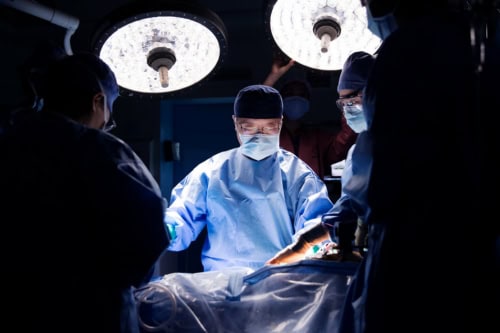
There have been more than 35 years of history at the Ajou University Hospital in Suwon. During this time, the institution has become a good business name recognized internationally. More than 53,000 people get inpatient care here annually, and the total number of requests is more than 1 million.
The Ajou University Hospital treats liver cancer, lung cancer, stomach cancer, breast cancer, colon cancer, gynecological oncology diseases, cardiovascular diseases, osteoarthritis, and hearing problems.
The doctors and nurses at the hospital have a lot of training and experience. The hospital became a research institution in 2013 because of the high quality of its medical care and how it keeps adding new technologies. Because the hospital combines science and is often accredited, patients can access the latest and most effective treatment methods. The Joint International Commission or JCI has often accredited the hospital, showing that the medical care here is high quality.
The Ajou Hospital is known for its high-tech equipment. High-tech medical complexes aren’t just shown here; they’re also available in the correct numbers. So, doctors in Ajou have access to three gamma knives, two robotic surgery systems, four MRI machines, six computed tomography systems, and many more.
Since the hospital opened, its main goal has been to help people from other countries. Today, there is a separate infrastructure for people from different countries, which makes it possible to give them the level of comfort they need.
Medical Specialities
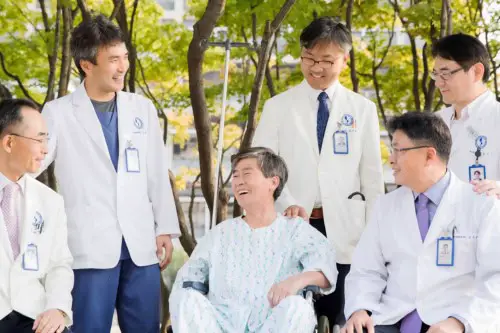
Medical professionals use cutting-edge medical and surgical equipment and facilities to perform organ transplants, highly complex heart surgeries, cancer surgeries, and other operations in various clinical departments.
The Ajou University Hospital, Suwon-si, opened its doors for the first time in September 1994. It aimed to provide the best medical care possible using the most advanced medical and surgical technology.
The Ajou University Hospital in Suwon-si is a multi-specialty hospital with ten cancer centers that focus on different organs, a Cardiovascular Center, a Comprehensive Treatment Center for Osteoarthritis, a Center for Torticollis, a Children’s Development and Obesity Center, an Integrative Care Center, a Gamma Knife Center, an Organ Donation Center, and the Ajou Sports Medicine Center. There are also 41 clinical divisions and three specialist centers, such as a Genetics Clinic, a Pain Clinic, and a Child Psychiatry Clinic.
Since 2011, the Joint Commission International has revalidated it three times to check its accuracy and quality of care. The Ajou University Hospital has been recognized as research-driven by the Ministry of Health and Welfare of South Korea. South Korea’s infrastructure is being improved via the combined efforts of industry, science, researchers, and the hospital.
The Ajou University Hospital is the most important in the South Korean province of Gyeonggi.
Facilities
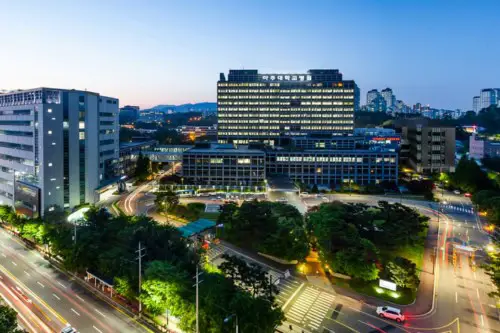
Since its opening, the Ajou University Hospital has grown to include a 14-story hospital building, a Well-being Center, the Ajou University School of Medicine, the Ajou University College of Nursing, a Regional Emergency Medical Centre, a Southern Gyeonggi Trauma Centre, and a funeral home. All of them have more than one floor.
It has 28 operating rooms, one unique because it has a robot. The Intensive Care Unit (ICU) has separate areas for internal medicine, general surgery, neurology, cardiology, neonatal care, and emergency care. EKG monitors, ventilators, and pacemakers are all in the ICU.
Ajou University Hospital’s mission is to enhance the state of medicine in Korea through cutting-edge research while providing the highest quality patient care and the most current information to local physicians and nurses. The hospital treats an average of 1,000 inpatients and an additional 4,000 outpatients daily.
One of the most outstanding hospitals in South Korea also includes state-of-the-art medical technology like PET-CT, 3.0T MRI, 256 Slices CT, SPECT PET, and various Angiography devices, as well as pioneering treatments like Rapid Arc (the first cancer treatment in Asia) and the da Vinci surgical robot. Patients will have better access to timely care as diagnostic tools and procedures advance.
Services For International Patients
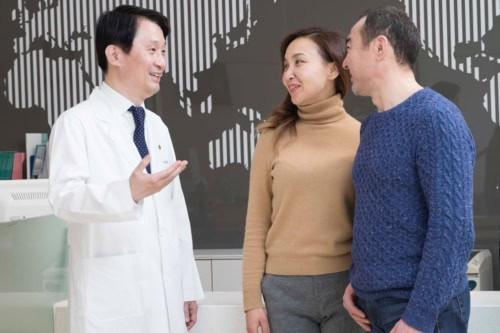
Ajou University Hospital has worked hard to provide international patients with high-quality medical care and as few problems as possible. It does this by paying attention to and being interested in different types of treatment and administrative support.
The International Healthcare Center has world-class doctors and cutting-edge technology to help their foreign patients recover rapidly. To guarantee that all resources are dedicated to overseas patients at all times, the team has been in charge of outpatient, inpatient, and emergency departments.
The center is on the ground floor of a new building called the Well-being Center. It is ready to offer various medical services by providing patients with a large office and a comfortable waiting area. Staff who speak English, Japanese, and Russian can help foreign visitors.
Especially when the hospital opened, it made a joint alliance with the U.S. Military Medical Group, which liked their skilled and efficient staff and up-to-date medical equipment, and with Overseas Hospitals in South Korea or medical travel agencies, which can send patients elsewhere for high-tech medical services. It also has agreements or contracts with overseas insurance companies or the companies that help them. It can help patients get financial help from their insurance by helping them with administrative tasks.
- Contact: 031-219-4311~3, 4010, 7070
- Website: Ajou University Hospital
- Address: 164, World Cup or, Yeongtong-gu, Suwon-si, Gyeonggi-do (16499), South Korea
- Working Hours: 8:00 – 17:00 (office hour)
Gangnam Severance Hospital – Yonsei University (Rank #133)
Yonsei University Health System established Gangnam Severance Hospital in 1983 to expand its medical business and establish a stronghold for healthcare delivery in the Gangnam neighborhood of Seoul. Gangnam was an area that had been underserved in terms of high-quality medical services before establishing the hospital. Hence, the opening of the Gangnam Severance Hospital was the key to achieving this goal.
In 1984, the hospital performed the first spine surgery using chemonucleolysis; in 1996, it achieved the first successful lung transplant surgery; in 1999, it completed the first muscular cell transplant surgery in a refractory case patient with muscle disease. In 2001, it completed the first successful surgery for enterobiasis in an ultra-low birth weight patient, demonstrating its undisputed excellence. The hospital has consistently invested in improving healthcare quality, leading to these successes.
In addition, the hospital was the first in Seoul to construct a trauma center. It was also the first to introduce customer-centered, cutting-edge medical devices and systems, which allowed it to take the lead in providing accurate diagnoses.
The Yonsei University Health System, South Korea’s first institution to practice modern medicine, provides exceptional patient care at Gangnam Severance Hospital. Its mission is to become the kind of hospital where patients feel at ease entrusting their lives to the staff.
Why is Gangnam Severance Hospital – Yonsei University one of the best hospitals in South Korea?
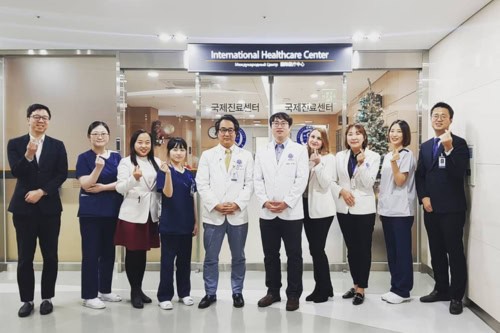
Services that put the patient first
Patients have always been central to what we do at Gangnam Severance Hospital. The staff at Gangnam Severance Hospital will do their best to answer all of the patient’s questions and take great care of them at every step of their treatment.
Clinical Skills and Patient Experiences That Have Been Taught Well
Gangnam Severance Hospital, an essential part of YUHS, has been practicing the well-known “Yonsei medicine” for decades. The strong network of experts in every medical field at YUHS guarantees you the best care.
System for health care that is up-to-date
AI-based diagnostic systems offer high-level medical services combining the latest medical and scientific technology, such as da Vinci robotic surgery, MR-LINAC, EOS, and 3D printing.
The hospital that treats the most severe illnesses
Gangnam Severance Hospital has made much progress in medicine thanks to its excellent doctors and treatment systems. We are especially good at treating severe diseases like cancer, heart disease, and spinal disease. We have several specialists who can help people with severe medical needs.
International Patients Need a Specialized System
Since 2003, the International Health Care Center has been open at Gangnam Severance Hospital. About 18,000 people from other countries, like the United States, China, Mongolia, Russia, and the Middle East, are treated yearly. There are translation and concierge services to help patients get the most out of the excellent medical systems in the hospital.
Medical Specialities
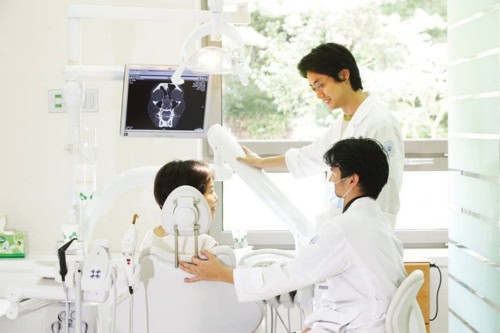
Cancer Hospital
The Cancer Hospital has assembled a group of the best doctors who can treat cancers of the thyroid, lung, breast, liver, pancreatic duct, stomach, colon, rectum, uterus, ovary, larynx, and prostate. Together, this team can work to fight the complicated disease of cancer and give each patient appropriate care.
Heart Brain Vascular Hospital
The best way to treat cardiovascular disease is to find and treat it quickly. Since 2008, more than 2,500 surgeries on the aorta have been performed at this hospital. Also, since 2012, they’ve been using the “Hybrid Operating Room System,” a high-tech, futuristic operating room.
Spine Hospital
Gangnam Severance Hospital’s Spine Hospital is Korea’s first hospital for spinal care. It offers a complete program from surgery to recovery, all in one place. They offer the best medical services in this field because they have learned a lot about spinal diseases over a long period and have the most up-to-date medical technology.
Dental Hospital
The Dental Hospital at Gangnam Severance Hospital has five clinical departments and five special clinics. These are Oral and Maxillofacial Surgery, Orthodontics, Conservation, Prosthetics, and Periodontology. In addition to providing a pleasant and comfortable space for treatment, the center is also developing cutting-edge technologies to restore teeth to their normal functions and improve their appearance.
Gangnam Severance Hospital uses a “multidisciplinary treatment system” to treat patients. Different clinical departments work together to develop the best plan for each patient. With its cutting-edge surgical tools, the hospital is at the forefront of finding ways to treat cancer. Also, the hospital takes a whole-person approach to healing cancer. They treat patients and help them recover and prevent cancer. They provide diet management, cooking classes, a “rest of mind” program for patients and their families, and health lectures for the general public.
Facilities
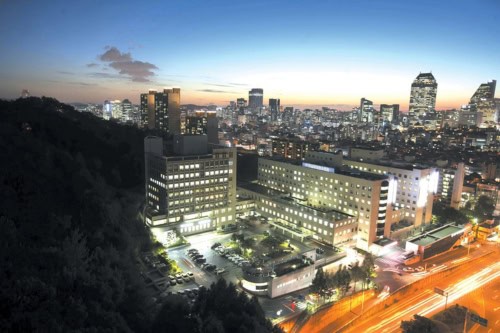
Gangnam Severance Hospital was built in 1983 so the Yonsei University Medical Center could do more with its medical project. It is a high-end hospital in Gangnam, Seoul, with cutting-edge research and medical equipment. The hospital has cancer, spine, and dental hotels to assist patients better. The Gangnam Severance Cancer Hospital opened in 1996. Its goal is to become a “global luxury hospital” using the best medical services to treat cancer.
Gangnam Severance Hospital has 30 clinical departments, seven surgical departments, seven centers and clinics for specialized treatment, and six clinics. Additionally, it was recertified by International Medical Institution Certification Committee for the third time in 2016 for patient quality of care and safety.
Services For International Patients
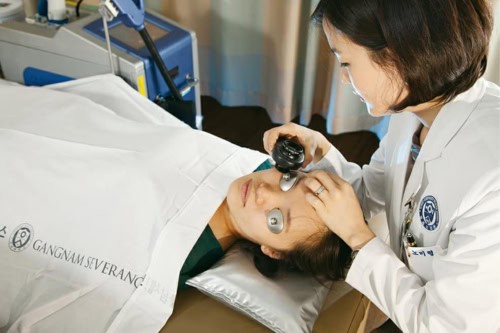
The hospital offers a streamlined treatment approach for patients from other countries to reduce their wait time. Once admitted to the hospital, a patient will immediately begin to undergo diagnostic testing and treatment. If an operation is necessary, a doctor will schedule it as soon as possible.
- Contact: +82-2-2019-3600 / 3690
- Website: https://gs.severance.healthcare/gs-en/index.do#allmenu
- Address: 712 Eonjuro(146-92 Dogok-dong), Gangnam-gu, Seoul 06273, South Korea
- Working Hours: from 9:00 am to 5:00 pm Monday through Friday
Yeouido St. Mary’s Hospital (Rank #142)
The Yeouido St. Mary’s Hospital tries to show the love of Jesus Christ, the healer, by taking the lead in holistic treatment and medical service for sick neighbors in the spirit of practicing Catholic teaching. They have also been a leader in the growth of the domestic medical business by training good doctors and doing advanced medical research.
Yeouido St. Mary’s Hospital has set up a complete system to provide the best medical care based on the Catholic faith for diseases that can happen at any time in a person’s life, from birth to death. Catholic Maternity and Neonatal Intensive Care Center, NaPro Fertility Care Center (planned), Integrated Pain Center, Dementia Cognitive Function Center (planned), and Hospice Palliative Care Center.
This hospital is the first Catholic hospital and the center of the domestic medical mission. It is also a critical spiritual realization hospital; becoming a patient-centered hospital of the future is a big task.
One Hospital System: A New Step for the Korean Medical Community
Yeouido St. Mary’s Hospital and Seoul St. Mary’s Hospital started as one hospital through the One Hospital System. This was done to go beyond hospitals with better “medical technologies” and make a step forward as hospitals in South Korea with different medical systems.
As a Catholic hospital that protects the health and lives of people worldwide, the hospital lives up to its mission. It does this by breaking the rules of current medical services and becoming a safer, more harmonious place to get care.
Why is the Catholic University Of Korea – Yeouido St. Mary’s Hospital one of the best hospitals in South Korea?
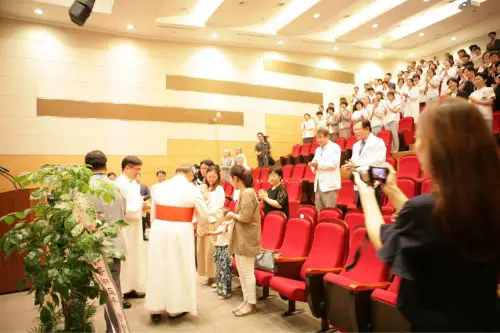
Yeouido St. Mary’s Hospital opened on May 11, 1936, with four doctors caring for adults and children. After 80 years, it has changed and grown to meet the area’s changing medical needs and become a “patient-centered, futuristic hospital.” In 2010, the Catholic University of Korea Yeouido St. Mary’s Hospital became its new name. Korea Catholic’s first official hospital was the Catholic University Yeouido St. Mary’s Hospital.
The hospital has 31 Clinical Departments and 15 Care Centers to help people in many ways. It gives holistic treatment and medical service because it has a spiritual bent. So, it has a complete care system from the beginning of life until the end.
In 2011, it was the first time the Ministry of Health and Welfare gave it a certificate as a medical school. The International Healthcare Center at the Catholic University of Korea Yeouido St. Mary’s Hospital opened in February 2013. It provides complete care to foreign patients with accurate medical services and a team of committed staff.
The One Hospital System was implemented in 2015, making Yeouido St. Mary’s Hospital and Seoul St. Mary’s Hospital into one hospital. In 2016, the Ministry of Health and Welfare also named it a hospice palliative medical center. Cancer screenings and visa physicals for the United States, Canada, Spain, Iraq, and Vietnam are also administered there.
Medical Specialities
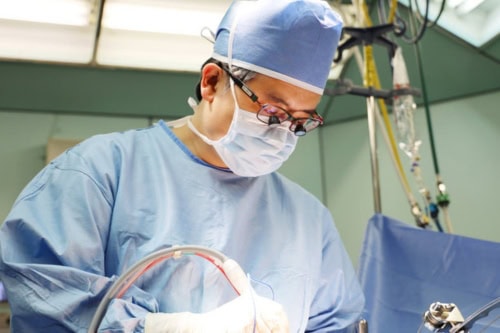
Yeouido St. Mary’s Hospital is known for its many care centers. These include the Catholic Maternal/Neonatal Intensive Care Centre, the NaPro Family Care Centre, the Integrated Pain Centre, the Catholic Dementia Cognitive Impairment Centre, and the Hospice Palliative Medical Centre.
The Cardiovascular Centre, the Cranial Nerve Centre, the Dental Centre, the Emergency Medical Centre, the General Health Check-up Centre, the Hepatobiliary Centre, the Integrated Pain Centre, the Ophthalmology Centre, and the Spine Centre are some of the other care centers.
Most frequent surgery procedures: alpine deformity surgery using a minimally invasive method (DLIF), spinal deformities in children and adults, primary and metastatic spine tumors, and degenerative spine diseases treated with minimally invasive TLIF and LLIF.
Facilities
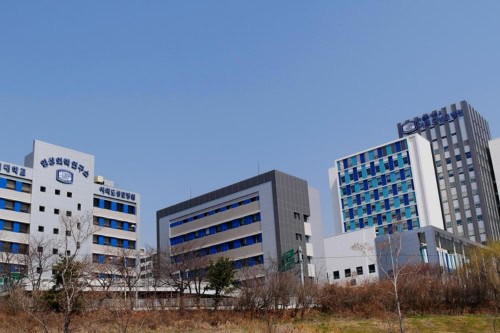
Seoul St. Mary’s Hospital, a branch of the Catholic University of Korea, is one of the most important hospitals in the Catholic Medical Center. It has top-notch medical staff and high-tech medical tools. As one of the best hospitals in South Korea, it also has a new medical complex with 1,090 beds, a student center, an auditorium, a chapel, a library, offices, and room for recreation.
Catholic Medical Center is already a leader in cancer and stem cell research. With the new building, it will be able to give specialized diagnosis and treatment to twice as many patients and become even more of a leader in cancer and stem cell research.
The complex was finished in December 2008 and has sites for treating cancer, transplanting organs, cell therapy, heart care, and eye care. It has high-tech digital systems that make it easy to store and quickly access medical information and images electronically.
Services For International Patients
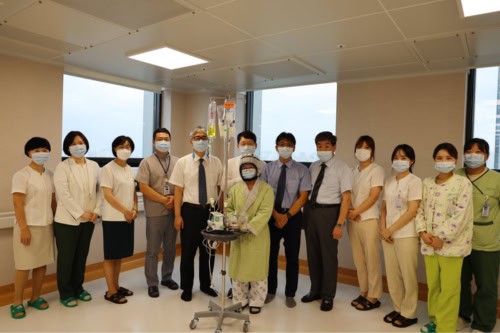
The International Health Care Center is doing its best to help international patients get better quickly with the help of top-notch medical staff and equipment. It has put the team in charge of outpatient, inpatient, and emergency centers to ensure that all resources go to international patients 24/7.
The recently remodeled International Health Care Center has a large office and a comfortable waiting area on the ground floor. It is ready to provide medical services for patients and help foreign visitors with English-speaking staff.
- Contact: +82-2-3779-2212 (Main number)
- Website: https://www.cmcsungmo.or.kr/en.common.main.main.sp
- Address: 63-ro 10, Yeoungdeungpo-gu, Seoul (Postal Code 07345)
- Working Hours: Reception hours: 8:00 ~ 16:30 / Consultation hours: 8:30 ~ 17:00 (The consultation hours may vary depending on the circumstances of each department.)
Korea University – Anam Hospital (Rank #144)
The Anam Hospital at Korea University has grown from Hyehwa Hospital, which had 400 beds, to what it is now, a prominent medical center with about 1000 beds. In 1991, the hospital moved to its current location.
Since then, it has grown and changed many times. In particular, the 2005 renovations and addition of a study building made the place better for the environment. Changes and new ideas are always happening at the hospital. For example, the Intensive Care Units, Emergency Center, Health Promotion Center, and facilities for outpatients are all things that have been added or made more prominent.
Also, the hospital is fully committed to improving the standard of its medical services by adding cutting-edge equipment and systems like Robot surgery, Linear Accelerator, 3.0T MRI, PET-CT, and TLA and by hiring top-notch medical professionals from both inside and outside the country. It is becoming Korea’s most reliable and best hospital by continuing to train its staff and teach people in nearby communities.
Why is Korea University – Anam Hospital one of the best hospitals in South Korea?
The Korea University Anam Hospital has been a well-known public health center since 1983. It is the best example of science in the 21st century.
Modern equipment, a well-developed infrastructure, new ways of treating patients, and highly qualified staff helped Anam Hospital pass accreditation by the Joint Commission International twice (in 2009 and 2012) and get a certificate in clinical studies from FERCAP.
About 1.5 million patients worldwide visit the Korea University Medical Center each year, of which this hospital is a component. It’s one of Korea’s best ten medical schools where international students are welcome. Therefore, this facility is outstanding in terms of both patient care and the creation of cutting-edge medical tools and methods.
Over the years, Anam has grown into a world-class medical center with the latest technology. It has more than 2,000 employees, 605 of whom are doctors and 850 of whom are nurses. The main goals of this hospital are to put the needs of the patients first, to educate foreign staff, to be socially responsible, to build a research base, to work with partners, and to communicate.
The center has the most up-to-date medical tools, like PET-CT scans, linear accelerators, 3.0 T MRIs, and the most up-to-date surgical robots, among other things. Regarding the number of robotic surgeries done to eliminate bladder cancer, this hospital is the first in Asia.
Medical Specialities
Diagnostic Center
The Center for Comprehensive Diagnostics is one of the best in the country. It is run out of the Anam center. For foreign patients, personalized and thorough body test programs (Standard, Standard Plus, Noble, Premium, VIP, Cancer-specific, and Brain-specific) help them quickly determine what is wrong and get the proper treatment.
Gastroenterology Center
The gastroenterology center at Korea University Anam Hospital is the best place to handle upper and lower GI tract, liver, gallbladder, and pancreas diseases. They successfully treat gastrointestinal cancer, Crohn’s disease, gastric and duodenal ulcers, liver inflammation, polycystic pancreatic disease, esophageal varices, hepatic cirrhosis, hepatitis, etc.
Center For The Treatment Of Breast Diseases
In the spring of 2008, the Breast Treatment Center opened. Here are the newest types of mammography machines, ultrasound machines, 3.0T MRI machines, PET-CT machines, linear accelerators, and the Da Vinci Xi robotic system. This equipment makes it possible to diagnose and treat breast diseases, especially cancer, in a good way.
Cardiology Center
The newest version of robotic surgery is called Da Vinci Xi. It is used to do more complicated surgeries than other mechanical systems. Da Vinci Xi can do the most complex surgeries, like removing the smallest piece of dangerous tissue, much more accurately than a person’s hands. Compared to traditional laparotomy methods, using a robotic system dramatically reduces pain, bleeding, scarring, and the chance of infection. This kind of care helps the patient get better quickly after surgery.
Orthopedics And Traumatology
Anam Hospital is the best for making and using new drugs to treat osteoporosis. People worldwide come to this medical center because there are the fewest infections after knee and hip joint replacements. For knee replacements and proximal osteotomies of the tibia bone, doctors in Anam must use computer navigation devices to teach minimal blood loss and bloodless medicine.
Organ Transplantation
The Anam Organ Transplant Center has experts who do complicated organ transplants, even when the blood groups of the donor and receiver don’t match. Here, two organs can be transplanted at the same time. At the Korean Transplant Center Anam, a liver transplant can be done even if there is more than 30% fat on the donor’s organ, which is not usually done. At the Center for Transplantology, about 94% of patients survive each year because of how carefully they are prepared for surgery and how they are kept from rejecting donating organs.
Facilities
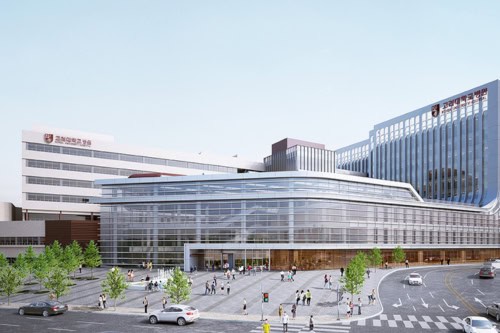
The Anam Hospital is comprised of a total of 36 departments and 25 specialized centers. Including an Emergency Center, a Sleep Center, a Cancer Treatment Center, a Sports Medicine Center, a Gastroenterology Center, a Cardiovascular Surgery Center, an Internal Organ Transplant Center, a Diagnostic Center, a Day Surgery Center, a Center for the Treatment of Environmental Diseases, and a Center for Pulmonology, amongst others.
As of 2014, the hospital has a total staff of more than 2,700 medical professionals (including Medical Staff 605, Nursing Staff 832, and General Staff 205).
The general capacity for inpatient care is roughly one thousand beds. As it can house around one thousand patients, and the services it provides to them include both standard, double, and single rooms. In addition, VIP rooms are fully furnished with everything required for a comfortable stay. The medical center features a coffee shop, a beauty salon, an automated teller machine, a grocery store, a computer area, a photography studio, and two separate dining rooms serving Korean and European cuisine.
Services For International Patients
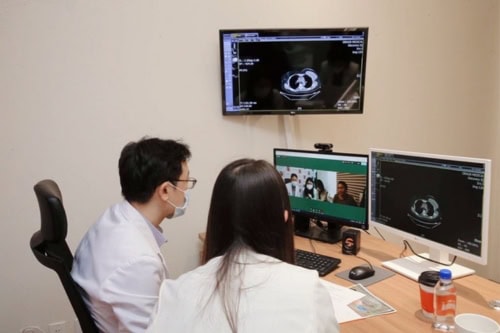
Since it first opened in 2008, the Korea University Anam Hospital International Health Care Center has been adding more services. Their international center is also a full-service medical and health care center that offers services like medical exams and evaluations, immunizations, vacation health consultations, personalized nutrition therapy, and medical help for people in other countries.
IHC is the principal place where people from other countries can talk to someone before, during, or even after their stay. Their skilled staff and translators do their best to make the patients feel at home and ensure everything about the visit goes smoothly.
More than 500 doctors work in facilities that are among the best in the world. These facilities are state-of-the-art. Because of this, the International Health Care Center can give its customers the best care possible. Doctors and nurses who speak more than one language work at the center. They are ready to help tourists in Korea or online patients with their healthcare needs. The center keeps a calm and safe environment. It gives good medical care and referrals to experts in other parts of the hospital.
- Contact: + 82 2 920 5677
- Website: http://anam.kumc.or.kr/language/ENG/main/index.do
- Address: 73 Goryeodae-ro Seongbuk-gu, Seoul 02841, South Korea
- Working Hours: 08:30~17:30 office hours
Final thoughts
It is commonly acknowledged that South Korea’s healthcare system is of extraordinary quality and ranks among the very best in the world. Because the nation’s finest hospitals in South Korea are outfitted with cutting-edge medical equipment, cutting-edge medical facilities, and highly qualified medical staff, the country is attractive for medical tourists looking for the highest possible medical care. Medical tourists flock to the country.
These hospitals in South Korea are well-known for providing outstanding patient care, excelling in various medical subspecialties, and developing cutting-edge medical technologies. They offer a one-stop shop for all of your medical care needs because of the comprehensive variety of services they provide, which includes diagnosis, treatment, and post-treatment care.
South Korea’s top hospitals offer exceptional medical care to patients worldwide. They are equipped with the latest medical technologies, have specialized fields in various areas, and provide comprehensive care from diagnosis to post-treatment care. If you seek medical care in South Korea, any of these hospitals would be an excellent choice.
IVK’s Top Picks – Day Tours, Tickets, and Travel Activities
Seasonal Picks!😍


